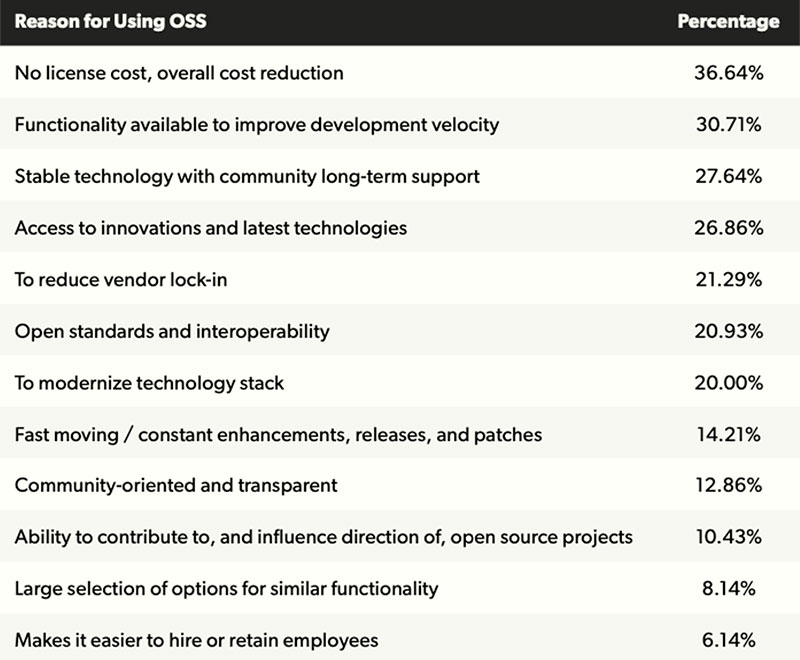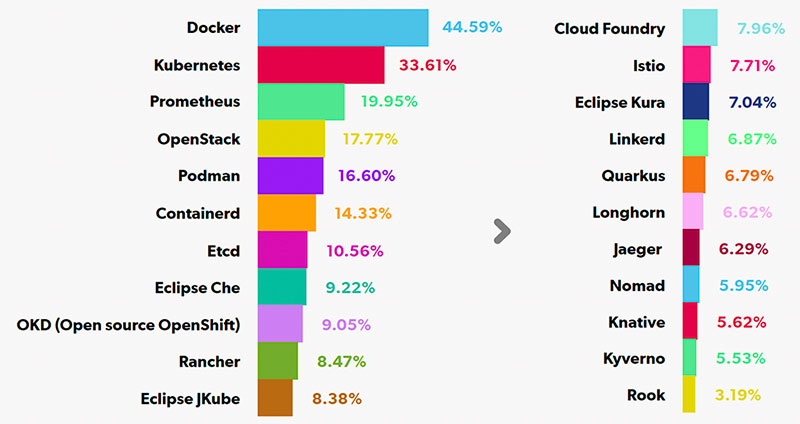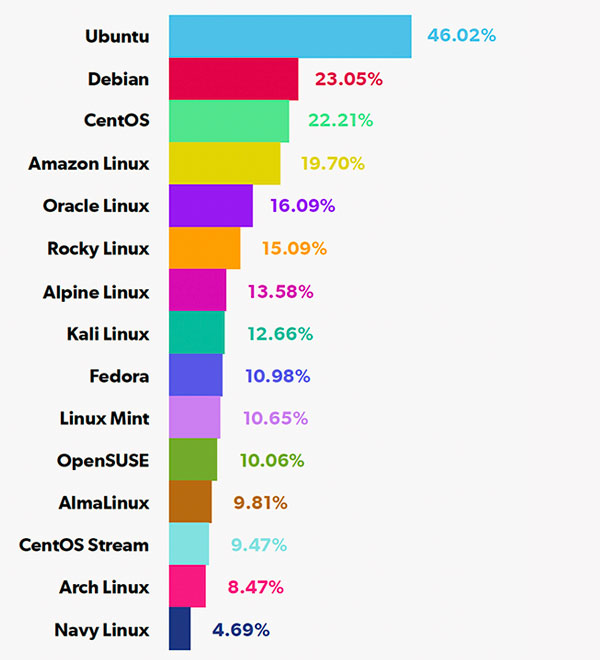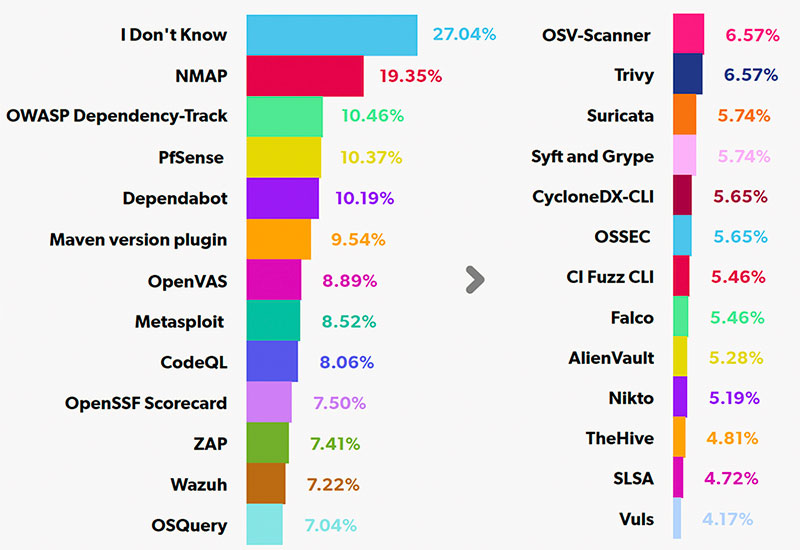Over the last 40 years, the open-source software (OSS) movement has been a moving target for detractors and supporters. Its free-to-distribute code philosophy competed against proprietary software to feed the user frenzy surrounding the popularity of business and personal computing.
According to various accounts — each with different timelines stretching from the 1960s through the 1970s — the hacker culture and academia gave rise to large-scale commercial computers loaded with free software. In 1983, programmer Richard Stallman launched the GNU Project to write a Unix-like computer operating system running on free software. He later established the Free Software Foundation in 1985 to support the movement.
Today, open-source software is used worldwide. Ironically, it is often embedded within commercial code in business and industrial programs and is the backbone of the internet’s server and networking functionality.
Open Source Thriving Globally
The open-source movement is healthier and more widespread than ever. That view sums up the results of OpenLogic by Perforce’s 2024 State of Open Source Report on its usage, market trends, and analysis released in February, which describes open source as an integral part of organizations of all sizes.
Some 95% of survey respondents from all industrial and business sectors said their organizations either increased or maintained their open-source usage in the past year, with 33% admitting that their usage increased significantly.
Why? Either no license cost or cost reduction was among the top reasons, followed by reliable functionality. In 2022, cost reduction was the ninth most popular reason cited for using open-source applications. However, according to researchers, challenging economic circumstances worldwide since then may have played a bigger role in the continued reach of open-source software in business and industry.

This year’s report, created in collaboration with the Open Source Initiative (OSI) and the Eclipse Foundation, covers OSS adoption, investment, and support challenges for organizations using a multitude of technology types — infrastructure, cloud-native, frameworks, databases, automation, and more.
“It’s really a new wave of open-source adoptions. I’m not surprised that a lot of respondents claim that they are using more and more open source because they think that is the truth,” Javier Perez, chief OSS evangelist and senior director of product management at Perforce Software, said in introducing a webinar discussing the report.
Ongoing Open-Source Success
In October 2023, researchers surveyed 2,046 responses from individuals around the globe working with open-source software in their organizations. More than two dozen questions polled respondents about the use and support of open-source software by their organizations, from large enterprises to early-stage startups working across numerous industries worldwide, according to Perez.
The survey’s primary focus was business-critical software and open-source security tools. The second focus was new and addressed growing cybersecurity concerns related to open-source software. Perez said that topic was necessary because the U.S. and EU governments have established oversight on cybersecurity.
Stefano Maffulli, executive director of OSI, and Gael Blondelle, chief membership officer at Eclipse Foundation, agreed that open-source software adoption is proliferating, with a 95% increase in use over the past year. Continued success with open source will critically depend on long-term support and maintenance and the need for open standards and interoperability.
Security risks and the need for organizations to keep up with the latest versions are challenges that require solutions. They recognized that regulatory compliance is important, and government agencies are leading the way in generating regulations needed for the industry’s continuing maturation. However, they acknowledged the potential impact of regulatory changes on open-source projects.
Key Findings About the State of OSS
Among the 95% of organizations that increased or maintained their use of open-source software in the past year, 33% said their usage increased significantly. The 5% who reduced their OSS were predominantly early-stage startups, whereas 39% of those representing large enterprises (500 to 5,000 employees) reported a significant increase.
Geographically, the use of OSS products significantly increased in Africa, Asia, and Latin America.
In last year’s report, software development lifecycle (SDLC) tools and containers occupied the top two usage spots. But this year, both categories were surpassed by databases and data technologies. Data continues to be a dominant force in the digital economy. With the rise of AI models that train on large amounts of data, it is not surprising to see data technologies getting the most attention, noted researchers.
Many organizations continue to invest in cloud and container technologies. Large enterprises are using containers as their preferred architectural model, while small-to-mid-size entities are allocating more to data technologies.
Cloud-Native Open-Source Technologies Used by Organizations

The top five investment areas for organizations’ most business-critical open-source software showed considerable overlap. The technologies that got the most votes include Linux, Jakarta EE, Apache HTTP Server Project, Docker, PHP, WordPress, Python, MySQL, Kafka, and Eclipse.
More than 40% of respondents from organizations of all sizes said keeping up with updates and patches is a challenge. In particular, medium-sized companies (100 to 499 employees) face challenges with infrastructure scalability. Project teams often are not responsive to suggestions or bug reports created by third parties.
The lack of a clear community release support policy significantly impacts early-stage startups and medium-sized companies.
Linux Distributions Gaining Ground
Again, in this current survey, Ubuntu is the most common Linux distribution, with 46% of respondents using it in the workplace, representing a 26% increase over the previous year. Likely, controversies in the Linux space — such as Red Hat’s decision to restrict access to Red Hat Enterprise Linux (RHEL) code and the fast-approaching end-of-life for CentOS 7 on June 30 — have further benefited Ubuntu’s growing adoption.
Interestingly, 22% of those surveyed still use CentOS, making it the third most popular distribution, just 1% below Debian. Within the technology vertical, however, 28% remain on CentOS.
Open Source Linux Distributions Used by Organizations

According to researchers, these are most likely companies with many CentOS deployments that have not had time to migrate yet.
They also noted it is still too early to declare a winner in the so-called “Linux Wars.” AlmaLinux is a favorite among vehicle or transportation logistics organizations, whereas Rocky Linux has an edge in the health care or pharmaceuticals sector.
Respondents offered alternatives to CentOS’s approaching end-of-life status, such as Oracle Linux, Rocky Linux, AlmaLinux, CentOS Stream, and Navy Linux.
Not covered in the report, according to the latest data from StatCounter, Linux’s desktop market share surged an additional 1% in the last eight months, reaching 4.03%. Microsoft Windows tips the scales at 72.13%. Apple’s MacOS is far behind in second place at 15.46%.
Open-Source Security Tools Often Go Unused
The 2024 State of Open Source Report suggests more focus is needed on security tools and license compliance when using open-source technology:
- Only 30% of government or public service entities report doing security scans or having security/compliance policies.
- The percentage of organizations with a legal team familiar with OSS licenses declined by 9%, and North America has the highest rate of legal teams familiar with OSS licenses.
Open-source security tools scan for vulnerabilities, secure firewalls, and generate SBOMs. They are a growing area due to the prioritization of security tooling at the software development stage and in networking and operations.
Which Open Source Security Tools Does Your Organization Use Today?

Only 20% of organizations generate software bills of materials (SBOMs). The leading industry in this realm is manufacturing, which includes chip manufacturing.
More than one-quarter (27%) of respondents selected “I don’t know” when asked which open-source security tools they used in their organization.
Sponsorship Patterns Among Leading Open Source Entities
The Linux Foundation, the parent organization that includes foundations such as OpenSSF, OpenJS, and the Cloud Native Computing Foundation (CNCF), is getting the most support from 15% of respondents.
However, researchers noted that the top four organizations (Linux Foundation, Apache Software Foundation, Open Source Initiative, and Eclipse Foundation) are within a percentage point or two of each other, so sponsorship appears to be evenly spread across these major open source organizations.
These numbers are all lower than last year’s. However, the data shows that North America and Europe have the most sponsorship participation.
Editor’s Note: The charts featured in this article are sourced from the 2024 State of Open Source Report and are credited to Perforce Software.























































